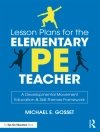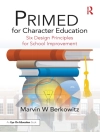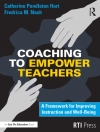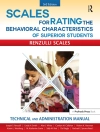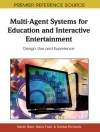‘Ron Nash brings the voice of reason and sanity to the field of education. With his clear, big-picture vision and his emphasis on routines, rules, and relationships, these practical and well-written ideas will help new teachers and veterans alike build connections with students and fellow staff members, keep their students engaged and involved in their own learning, and help them maintain their passion for teaching.’
—Jane Bluestein, Educational Consultant
Author, The Win-Win Classroom
Master proactive teaching skills that motivate students to learn!
Engaging and inspiring students is central to effective teaching, but it can also be a teacher′s greatest challenge. Written by nationally known teacher coach Ron Nash, this thought-provoking book shows how educators can build a partnership with their students and bring their teaching skills to a new level of excellence.
Drawing on his 30 years′ experience in teaching and staff development, Nash outlines a holistic approach to effective teaching, based on skillful planning and proven techniques for classroom management and facilitation. Emphasizing the ‘three Rs’—routines, rules, and relationships—Nash helps teachers lead students in a clear, consistent manner that wins their trust and develops their personal responsibility. Readers will find guidance on:
- Creating and sustaining a classroom community that promotes respect and achievement
- Fully involving students in learning while addressing a wide range of cognitive styles
- Collaborating with students, colleagues, and parents
- Using feedback and assessment to develop professionally and improve students′ academic performance
Discover a wealth of valuable strategies and activities that enhance both teaching and learning!
İçerik tablosu
Foreword by Fredric H. Jones, Ph D
Prologue
Preface
Acknowledgments
About the Author
Introduction
1. Positioning First Things First
2. Investing in Sustainable Relationships
3. Getting a Handle on Self-Control
4. Shifting Students From Passive to Active
5. Harnessing the Power of Feedback
6. Balancing Formative and Summative Assessment
7. Enlisting Investment Partners
8. Ramping Up Relevance
Epilogue
Appendix
References
Index


